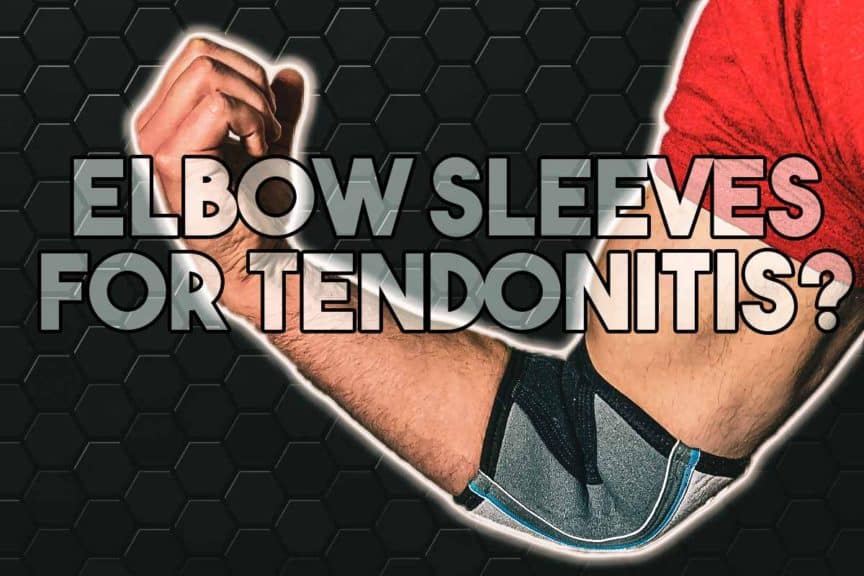Tendonitis and other subsequent tendon issues are never fun to deal with, and when it happens in your elbow it can make it hard to do your required daily activities. Whether the pain is a mild nuisance or a long-standing and painful issue, you want to do all that you can to get it taken care of. This leads many people to wonder if using an elbow sleeve can be of any benefit to them.
Elbow sleeves can be a helpful adjunct to use when dealing with elbow tendonitis due to the pain relieving effects that can be offered by the compression of the sleeve and the added warmth that is retained underneath it. The key is to make sure that you pick the right type of elbow sleeve for YOU.
If you’re wondering if elbow sleeves can help with your tendonitis and which type of sleeve may be best for you, I’ve got you covered within this article. So if you want to learn more, keep on reading!
Article overview (Quick links)
Click/tap any of the following article headlines below to be instantly taken to that particular section of the article.
- How & why tendon issues in the elbow often develop
- The most common tendon issues that occur in the elbow
- How elbow sleeves can help with your pain
- Picking the right type of elbow sleeve for you
- Bonus – How to treat tendonitis & tendinopathic pain
- Concluding remarks
Related articles
Tennis Elbow: How to Tape Your Elbow All By Yourself
Golfers Elbow: Here’s a Great Way to Tape Your Elbow All By Yourself
Medical disclaimer: While I am a physical therapist, I am not YOUR physical therapist. As a result, I cannot tell you whether or not any treatments and/or actions mentioned on this website may or may not be appropriate for you, including all aspects pertaining to elbow tendonitis. By following any information within this post, you are doing so at your own risk. You are advised to seek appropriate medical advice for any pain you may be experiencing.
Before I talk about the benefits of an elbow sleeve and how to pick the right one, I believe it will be of benefit for you to have some information on how these painful tendon issues occur so that you can hopefully avoid the issue from coming back in the future while also having more understanding of just what’s going on with your tendinotic elbow pain.
How & why tendon issues in the elbow often develop
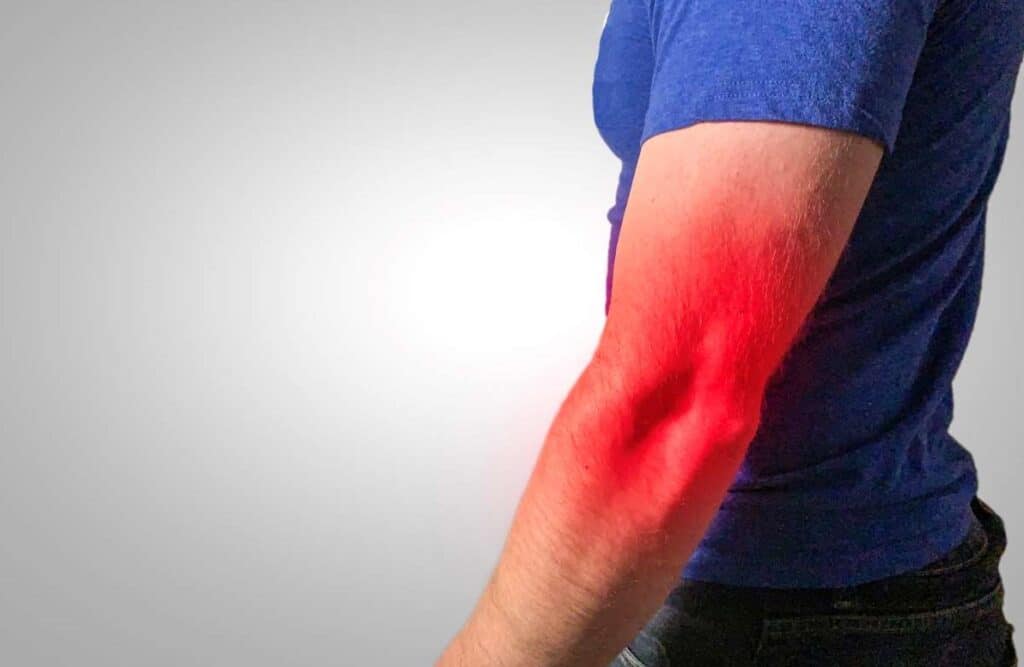
Tendons are the structures in the body that anchor muscles down to bones. When these tendons become overworked, strained or irritated, we can get inflammation within these tendons, which creates the condition of tendonitis.
(Side note: irritated tendons quickly move out of the inflammatory phase once irritated and move into a more chronic stage of discomfort known as tendinopathy. To learn how to fix this, be sure to read the bonus section.)
The most common causes of these elbow irritations occurring is due to repetitive strain being placed upon them. These “repetitive strain injuries” often occur in individuals who have occupations that demand chronic use of these tendons, such as mechanics (turning wrenches, etc.), sports athletes (throwing, gripping, etc.) among others.
When these tendons get irritated or are in a chronically unhealthy state, they can produce pain that feels anywhere from a burning-like sensation (most often when the issue first arises) to more of an overall intense, dull, aching sensation (more often in the chronic stages – where the issue has been going on for a longer duration of time)
The most common tendon issues that occur in the elbow
When it comes to the elbow, the most common areas of tendon irritation occur with the flexor tendons (on the inner-side of the elbow) or on the extensor tendons (on the outer-side of the elbow).
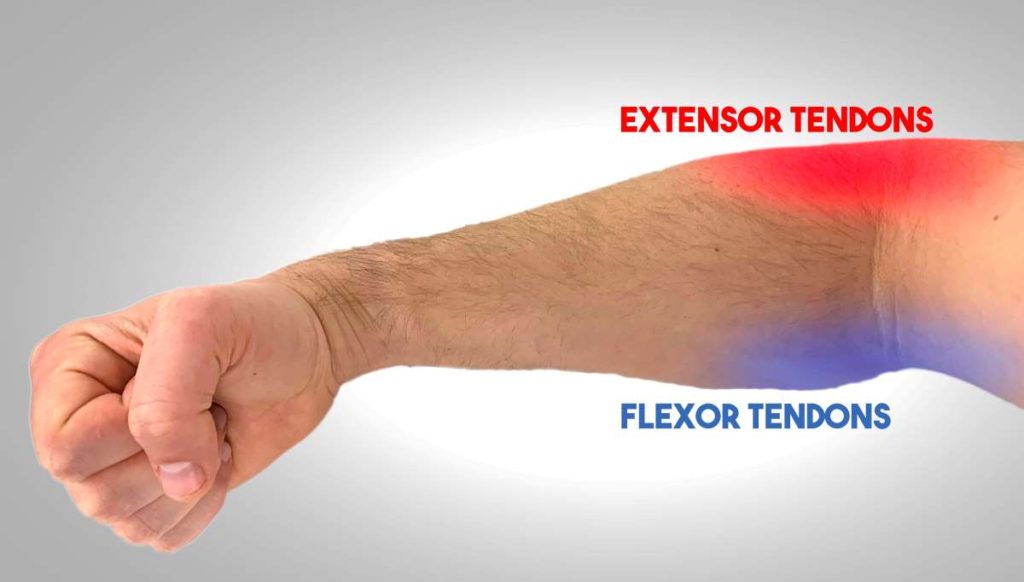
Inflammation of the flexor tendons, AKA golfer’s elbow
When the flexor tendons (inner-side) become irritated, this is known as medial epicondylitis, or more simply known as golfer’s elbow (yes, you can have golfer’s elbow without even being a golfer).
These flexor tendons attach to the muscles that allow you to curl your wrist and make a fist. If these tendons are irritated or unhealthy, you may feel the pain arise when you either squeeze an object, or extend your wrist (bending it away from you) or when performing both actions together.
Related: Golfers Elbow: Here’s a Great Way to Tape Your Elbow All By Yourself
Inflammation of the extensor tendons, AKA tennis elbow
Tennis elbow (otherwise known as lateral epicondylitis, or epicondylalgia) occurs when the tendons of the forearm muscles that are more on the outside region of the elbow are irritated. These forearm tendons connect to the muscles that help to extend the wrist and fingers (straighten them and bend them backwards).
When irritated or unhealthy, pain in these tendons is most often felt when performing resisted rotating movements of the arm (such as turning a screwdriver) or when flexing your wrist (bending it towards you) while having your elbow straight.
Related: Tennis Elbow: How to Tape Your Elbow All By Yourself
How elbow sleeves can help with your pain
When it comes to using elbow sleeves for painful tendon conditions (not just tendinitis, but also generalized tendinopathy), there are two key ways in which sleeves can help. The first way that they can help is by adding gentle compression around the sore tendons. The second key way they can help is by providing some elevated and subsequently retained warmth for the tendons and tissues underneath the sleeve.
It’s important to know that a generalize compressive elbow sleeve won’t provide any structural support for your elbow – they aren’t designed to provide any sort of rigid support or to offload the tendons. If you’re wanting a sleeve that can offer some structural support by offloading the sore tendons, you may want to opt for an elbow sleeve that has a built-in counterforce orthosis (brace) that can provide some extra benefit.
If desired, you could just opt for a counterforce brace all by itself. This certainly wouldn’t be a bad thing at all. Counterforce braces have been shown to be rather effective in alleviating tendon discomfort in those with tennis elbow. My personal preference would likely be to get one that has been built into a sleeve, but this is nothing more than personal preference on my part.
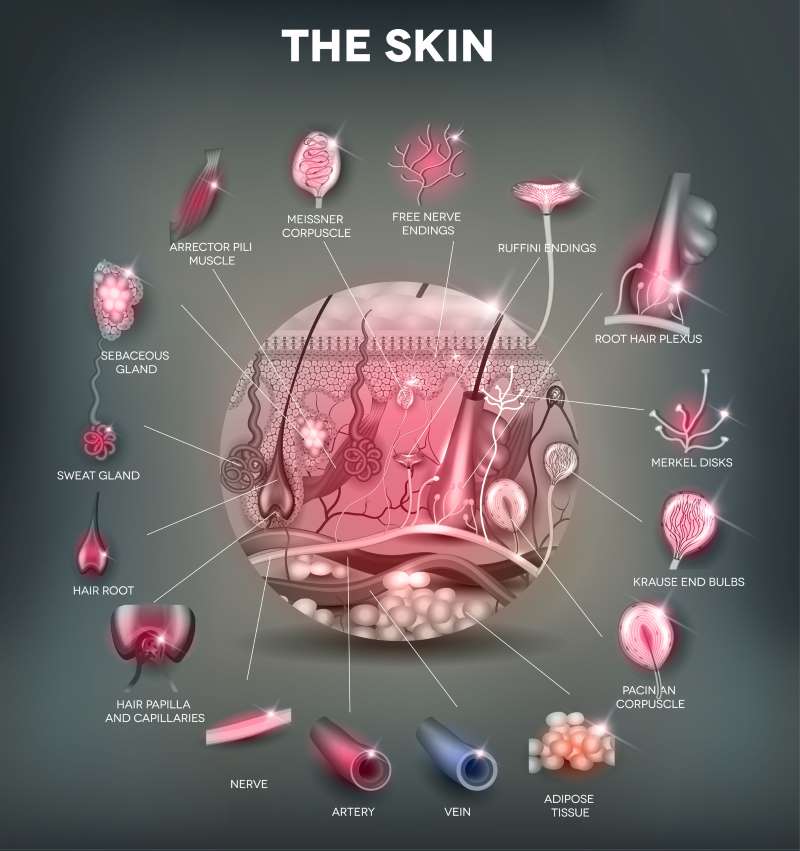
Added mild compression for decreased discomfort
Compression around or over top of painful spots in the body can often times have a pain-relieving phenomenon. The reason for this is due to a cool phenomenon where the sensation of compression that your brain picks up on over the area essentially distracts your brain from the pain it feels from the irritated/unhealthy tendons.
This occurs since the information about the sensation of compression that your brain is picking up on is transmitted by different types of nerves than the ones that transmit pain. It’s a really cool thing, and it’s known as the Gate Control Theory of Pain.
It’s the same thing as when we accidentally bump a part of our body and then instinctively rub it to make it feel better – we’re giving the brain a different sensation to focus on.
Of course, mild compression won’t take away all of your pain, and it certainly doesn’t give you free license to behave and carry on as if you didn’t have a tendon issue at all. But it should feel nice to have the compression and help to tone the discomfort down to a certain extent.
Retained warmth for better blood flow
The second added benefit of an elbow sleeve is the fact that it helps to keep warmth within the area. Warmth generally not only feels good, but will likely have some therapeutic effects as well.
Warmth can be really ideal for tendons that need some healing since tendons are comprised of a thick, gristly sort of tissue that doesn’t have the world’s greatest blood supply. By keeping an area warm, there tends to be an elevated amount of blood flow to that region. Warmth also helps to decrease fluid viscosity, which can help movements feel a bit more comfortable.
Think about if you’ve ever iced your joints or muscles before – everything feels stiff afterwards. Heat/warmth does the exact opposite, allowing better circulation and fluid dynamics to occur underneath the skin. Provided that your tendon-based elbow discomfort has been going on for longer than a handful of days, heat will more than likely be the best way to go than when compared to ice.
Now, if you’re worrying about heating up an area that’s inflamed, there’s really nothing to worry about. The scientific literature is showing us a few key things here: first, tendonitis is actually quite short-lived and thus rather rare. What most people experience is the lingering phase that comes after the inflammation, where the tendon is unhealthy despite the inflammation largely being absent (this condition is known as tendinopathy).
The second thing to be aware of is that the body needs an inflammatory process to keep the healing process moving in the right direction, we just never want excessive amounts of inflammation, and when it comes to added warmth from an elbow sleeve, you won’t have to worry about stirring up excessive amounts of inflammation.
Picking the right type of elbow sleeve for you
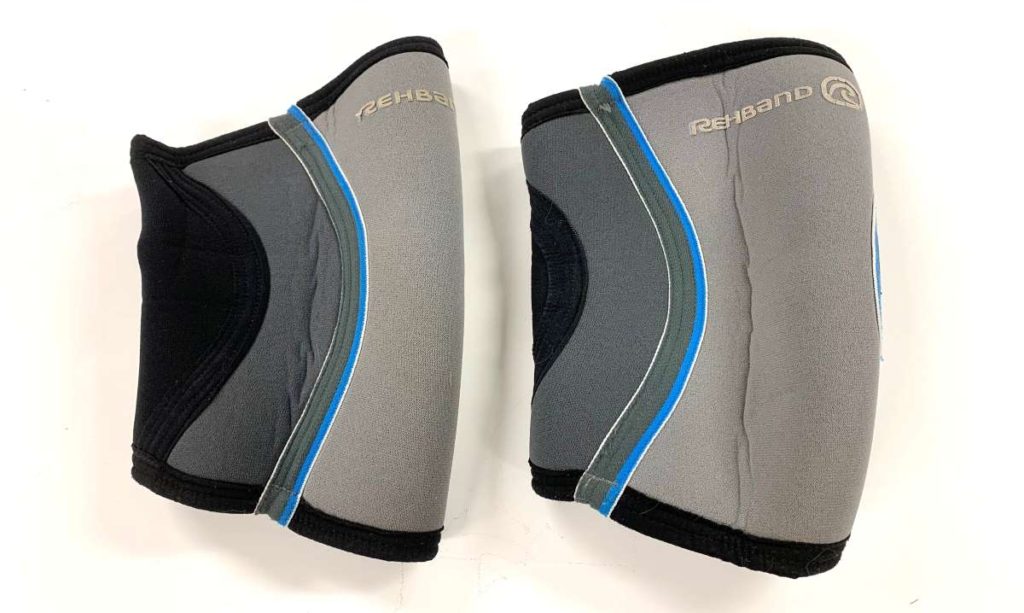
So now that you know the basics behind how and why tendon issues occur in the elbow, it’s time to pick out the right types of sleeve for you to wear.
The general rules to follow here are that you’re going to want a sleeve that is snug (i.e. offers some compression) but is comfortable enough that you could wear for extended periods of time (throughout a work shift, part of the afternoon, during a round of golf, etc.).
Too lose and you won’t get good, compressive effects and will therefore miss out on some heat retention as well. Too tight, however, and you’ll be uncomfortable and won’t want to wear it for extended periods of time, potentially marginalizing the therapeutic effects you could otherwise experience.
The key is to get a sleeve (or pair of sleeves) that you could see yourself wearing throughout the day. You could spring for the kind that I tend to wear, the 3mm neoprene sleeves, but if you’re wanting a sleeve that’s a bit longer in terms of covering the elbow, you could opt for these compression sleeves (link takes you to Amazon). What’s nice about these ones is that they’re made from nylon, so they won’t stink up the joint like neoprene sleeves tend to do once you get sweaty in them.
If you would prefer neoprene, I’d personally go for the Iron Bull sleeves (link takes you to Amazon). I have been using Iron Bull knee sleeves ever since my last pair of Rehband knee sleeves busted after tons of use. The Iron Bull sleeves feel just as good as the more expensive Rehband sleeves, but cost much less.
Affiliate note: I make a small commission at no extra cost to you when you purchase through any of Amazon links. I use these small commissions to help offset the expenses I incur with running this website.
Elbow sleeves can be made out of different types of materials, but I’ve always opted for neoprene sleeves, be it for my elbows or my knees. I won’t go so far as it’s superior to everything else, but I’ve always found the material to offer great warmth retention underneath. Neoprene does have a tendency to get smelly though as you sweat, so you’ll want to stay on top of keeping them clean.
I have always opted for 3mm thick neoprene sleeves as they offer ideal compression for me while not restricting my movement enough to be a nuisance or make things uncomfortable in general. There are also 5mm thick sleeves, however I’ve never personally used them.
Bonus: How to treat tendonitis & tendinopathic pain
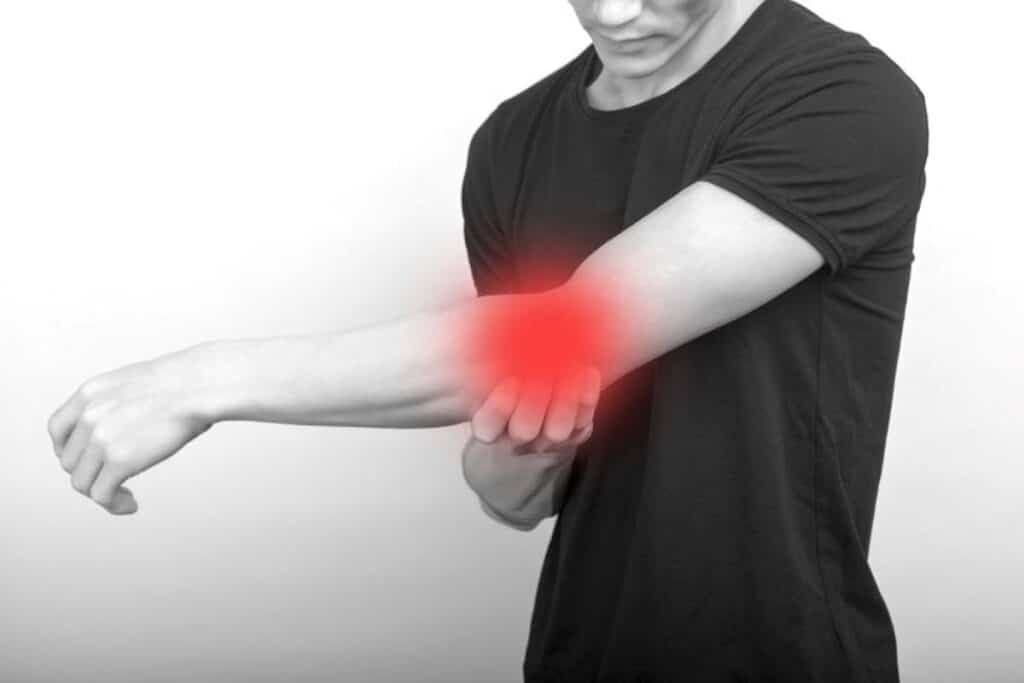
Unlike muscles, which have a terrific blood supply since they have a lot of blood vessels running through them (and thus, a high propensity to heal very well on their own), tendons don’t. Tendons are made of a thick, gristle-like tissue since they have to withstand highly tensile forces. As a result, they don’t have many blood vessels (which are delicate) running through them.
Related: IASTM: Here’s How it Works to Decrease Pain and Improve Mobility
This particular problem then results (in part) in an inability for the cells within the unhealthy tendons to get the elevated levels of oxygen and nutrients they need for the healing process.
What this all means for you is that it’s pretty common for tendons to not get all that much better on their own or just by trying to rest them. What they need for getting better is strengthening exercises, but those of a very specific resistance amount; if you don’t use enough, the tendon doesn’t get better but if you do too much, it gets irritated.
Treating tendinopathies on your own
While the exact specifics are beyond the scope of this article, scientific literature has shown that eccentric exercises are the best form of exercises that you can do when it comes to taking care of things on your own. For elbow tendonitis, therabars are often considered the gold-standard for taking care of elbow tendons.
Related: Blood Flow Restriction: Evidence and Uses for Injury Rehabilitation
Using shockwave therapy from a qualified healthcare professional
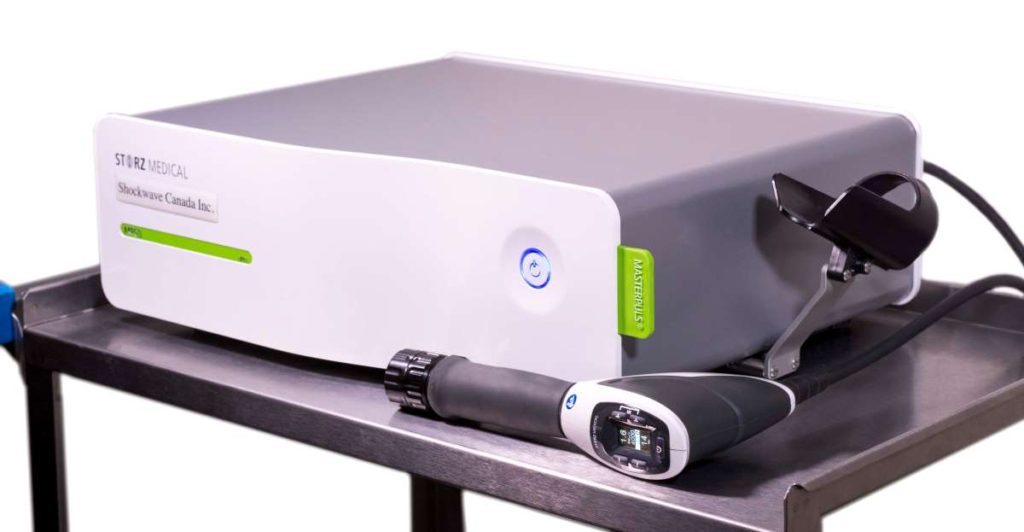
If you’re looking to get some effective treatment from a qualified healthcare professional, see if your can track someone down who uses extra corporeal shockwave therapy (ECST). It has proven within the scientific literature to a game-changer for taking care of tendinopathies. But make sure that you still do loading exercises for the tendons right after, otherwise you’ll minimize the effectiveness of the shockwave therapy.
I use shockwave all the time on my patients, and when it comes to using it for tendinopathies, I always follow it up with loading exercises for my patients. The success rates I have are wonderful. Most times it takes just a handful of treatments before my patients report drastic improvement on even the really stubborn tendinopathies.
Concluding remarks
Elbow sleeves can be a great added piece of arsenal to have when it comes to doing all that you can to get things feeling better again. They’re likely not going to solve the entire problem all by themselves, but they will likely provide therapeutic benefits in a way that will decrease pain/discomfort while hopefully expediting the recovery process a bit.
If you’re considering a sleeve, make sure it’s one that is snug, but comfortable enough that you could wear it throughout a good portion of the day, especially during activities that tend to create the discomfort. A good sleeve will provide some mild pain relief through compression as well as keep the elbow nice and warm, allowing extra blood flow and circulation in the general area.
Be sure to get appropriate treatment from a qualified healthcare professional if your pain is rather problematic, interferes with your abilities to perform work-related tasks or other daily activities, or if the pain has been persistent and doesn’t want to go away after a handful of days. Tendons can be quite stubborn when it comes to healing, so do all that you can to look after yourself and get it dealt with quickly and effectively.

Hi! I’m Jim Wittstrom, PT, DPT, CSCS, Pn1.
I am a physical therapist who is passionate about all things pertaining to strength & conditioning, human movement, injury prevention and rehabilitation. I created StrengthResurgence.com in order to help others become stronger and healthier. I also love helping aspiring students and therapists fulfill their dreams of becoming successful in school and within their clinical PT practice. Thanks for checking out my site!

